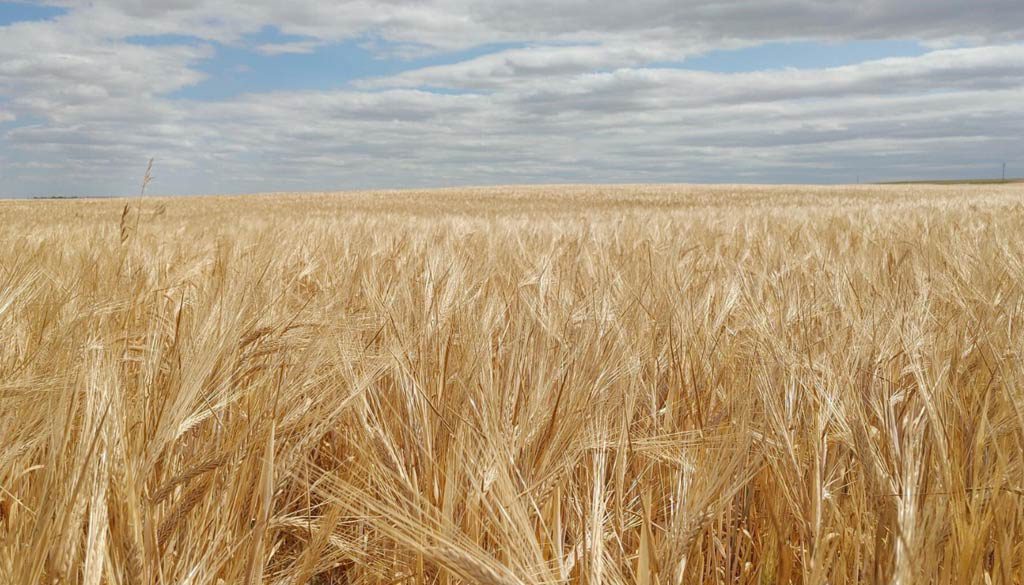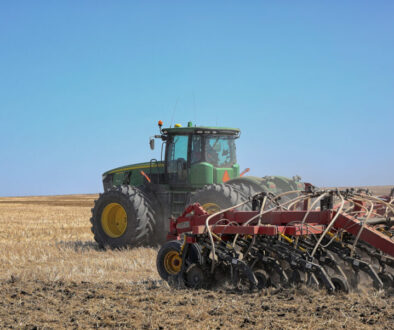Reducing Feed Barley Lodging
By: Karin Schmid, Alberta Beef Producers
Lead Researchers: Laurel Thompson (Lakeland College)
Collaborators: Lori Oatway (Field Crop Development Centre, Olds College); Ken Coles, Gurbir Dhillon (Farming Smarter); Vance Yaremko, Megan Snell (SARDA Ag Research); Jeff Jackson (FP Genetics); Trent Whiting (SeCan); Randy Retzlaff (Syngenta)
Background: Over 50% of barley grown in Alberta and Manitoba are general purpose (feed) varieties, while over 30% of barley grown in Saskatchewan are general purpose (feed) varieties. Even though barley remains a popular feed grain crop on the prairies, there is competition for acreage from other cereal grains such as corn and wheat.
Lodging is a serious production and management constraint for barley growers that can have significant impacts on yield. While breeding for standability (or resistance to lodging) is a primary goal of barley breeding programs, there are new agronomic technologies now available in Canada that may help reduce lodging as well.
One such technology are plant growth regulators (PGRs), which are compounds applied to the crop foliage that modify plant growth and development by reducing stem height while maintaining grain yield. PGRs have been used for many years in places like Europe, but a constraint is that application often results in an extra sprayer pass for growers. This project will examine if PGRs can be combined with other sprayer applications (e.g., fungicide, herbicide), and how barley varieties of different genetic backgrounds respond to PGRs.
Timeline: The project runs from 2022-2024, with final results expected in 2025.
Objectives: The objectives of this study are to:
1) Understand how barley varieties with different genetic traits (older genetics, newer genetics, European genetics) respond to PGR applications
2) Explore Moddus PGR application timings on feed barley to consistently minimize lodging while maximizing yield and quality
3) Determine production efficiencies by tank-mixing PGRs with herbicides and foliar fungicides
4) Establish yield and yield variability of newly registered barley varieties, grown under intensive agronomic management, under a range of soil types and agro-climatic conditions
Implications of the Research: This project will help to determine whether specific barley genetics respond more favourably to PGRs and whether PGR application can be streamlined to reduce sprayer passes. Ultimately, a consistent agronomic method to reduce lodging in barley production would reduce grower risk and improve yield.
This project is supported by the Alberta Beef Producers, Alberta Barley, Canadian Agricultural Partnership, Manitoba Crop Alliance, Results Driven Agriculture Research, SaskBarley, and Western Grains Research Foundation
Collaborators: Lori Oatway (Field Crop Development Centre, Olds College); Ken Coles, Gurbir Dhillon (Farming Smarter); Vance Yaremko, Megan Snell (SARDA Ag Research); Jeff Jackson (FP Genetics); Trent Whiting (SeCan); Randy Retzlaff (Syngenta)
Background: Over 50% of barley grown in Alberta and Manitoba are general purpose (feed) varieties, while over 30% of barley grown in Saskatchewan are general purpose (feed) varieties. Even though barley remains a popular feed grain crop on the prairies, there is competition for acreage from other cereal grains such as corn and wheat.
Lodging is a serious production and management constraint for barley growers that can have significant impacts on yield. While breeding for standability (or resistance to lodging) is a primary goal of barley breeding programs, there are new agronomic technologies now available in Canada that may help reduce lodging as well.
One such technology are plant growth regulators (PGRs), which are compounds applied to the crop foliage that modify plant growth and development by reducing stem height while maintaining grain yield. PGRs have been used for many years in places like Europe, but a constraint is that application often results in an extra sprayer pass for growers. This project will examine if PGRs can be combined with other sprayer applications (e.g., fungicide, herbicide), and how barley varieties of different genetic backgrounds respond to PGRs.
Timeline: The project runs from 2022-2024, with final results expected in 2025.
Objectives: The objectives of this study are to:
1) Understand how barley varieties with different genetic traits (older genetics, newer genetics, European genetics) respond to PGR applications
2) Explore Moddus PGR application timings on feed barley to consistently minimize lodging while maximizing yield and quality
3) Determine production efficiencies by tank-mixing PGRs with herbicides and foliar fungicides
4) Establish yield and yield variability of newly registered barley varieties, grown under intensive agronomic management, under a range of soil types and agro-climatic conditions
Implications of the Research: This project will help to determine whether specific barley genetics respond more favourably to PGRs and whether PGR application can be streamlined to reduce sprayer passes. Ultimately, a consistent agronomic method to reduce lodging in barley production would reduce grower risk and improve yield.
This project is supported by the Alberta Beef Producers, Alberta Barley, Canadian Agricultural Partnership, Manitoba Crop Alliance, Results Driven Agriculture Research, SaskBarley, and Western Grains Research Foundation





